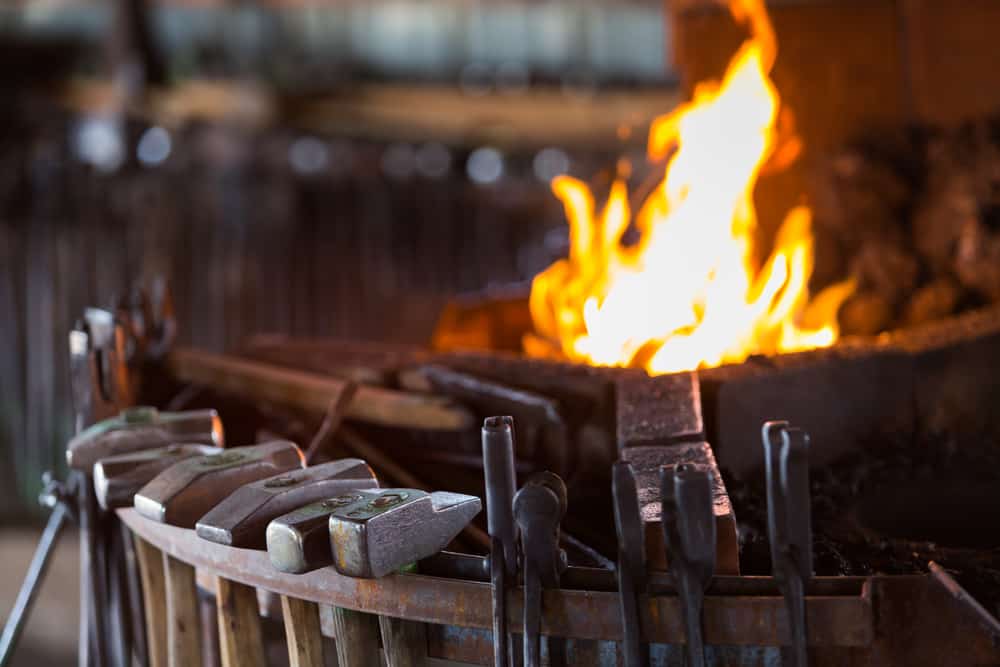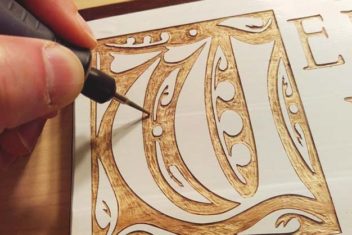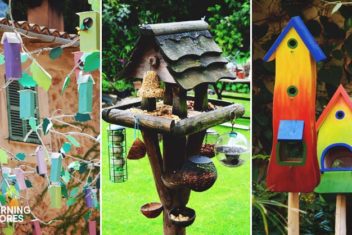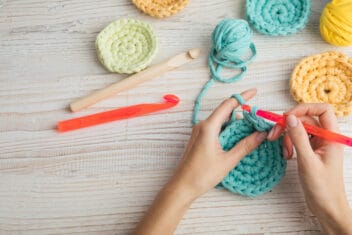Are you thinking of trying out blacksmithing? If so, you’re going to have so much fun! This age-old craft has seen a remarkable resurgence in recent years and is an excellent homesteading skill to have.
Depending on your interests, you can form everything from household utensils to horseshoes, nails, and more!
Let’s look at the basic blacksmithing tools of the trade you’ll need to get started.
Blacksmithing Tools You’ll Need
People have transformed various metals into practical and decorative items for nearly ten thousand years.
As you might imagine, blacksmithing tools have varied significantly over the centuries. That said, there are a few essentials that people in every culture and era have used for their metalsmithing needs.
1. A Blacksmithing Forge
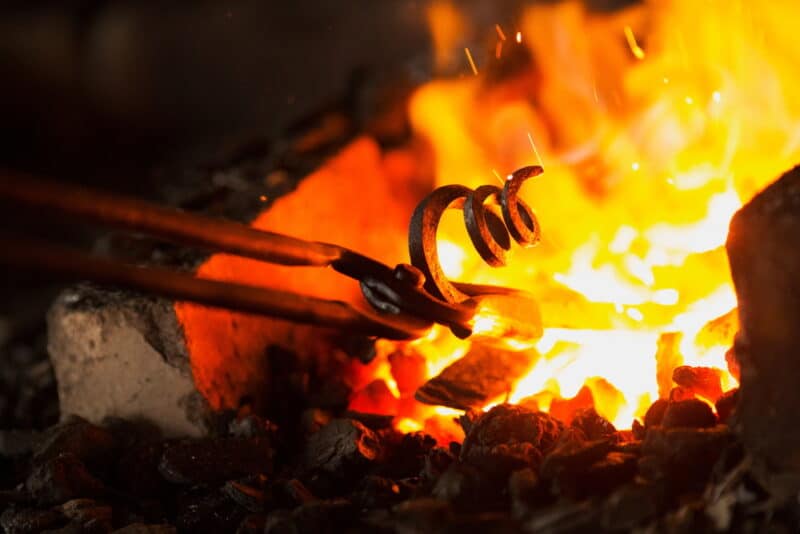
When considering your blacksmithing tools, the forge is the most crucial. Without a heat source, you won’t be able to heat up your metals so they can be worked and shaped.
When setting up your forge, you can be as high- or low-tech as you’d like. If you have a lot of money to play with, you can invest in a propane-fueled forge from a licensed manufacturer. Alternatively, you can also DIY a forge from basic materials.
For example, you can create a forge from a steel drum full of rocks and sand. Some people create forges with fire bricks covered in sand and charcoal. As long as you have a fuel source (e.g. propane or coals) and a way to keep the heat going (such as a fan, bellows, or even a hairdryer), you’re good to go!
The most cost-effective fire bricks you can find are those that go into cob pizza ovens or pottery kilns.
2. A Hammer
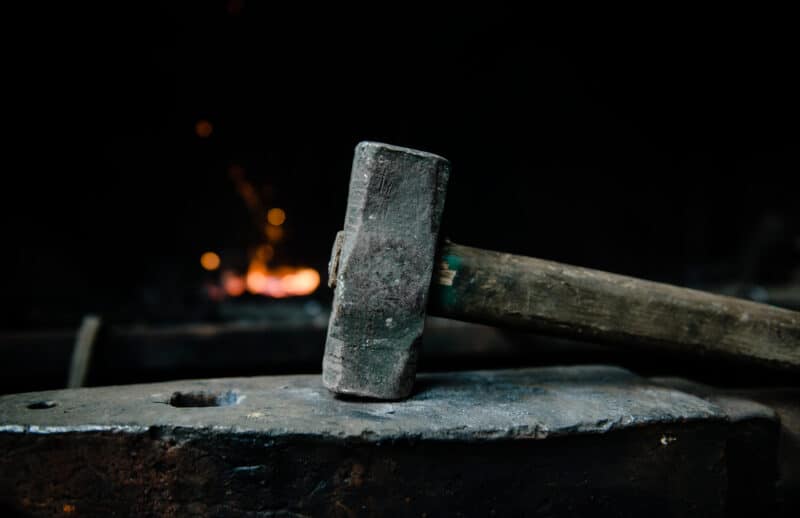
After the forge, your hammer is the blacksmithing tool you will count on the most for your blacksmithing endeavors. You need a tool to shape that metal, right?
There are a number of different hammers to choose from, but a cross or straight-peen hammer is the most common option. You can find them online, but most hardware stores should also have at least a few in stock.
If you plan on doing a lot of smithing, find a hammer that feels right to you and then pick up two of them. This way, you’ll have a backup when the first one starts to wear down. Furthermore, you won’t be disappointed if the manufacturer stops making that particular style.
3. An Anvil
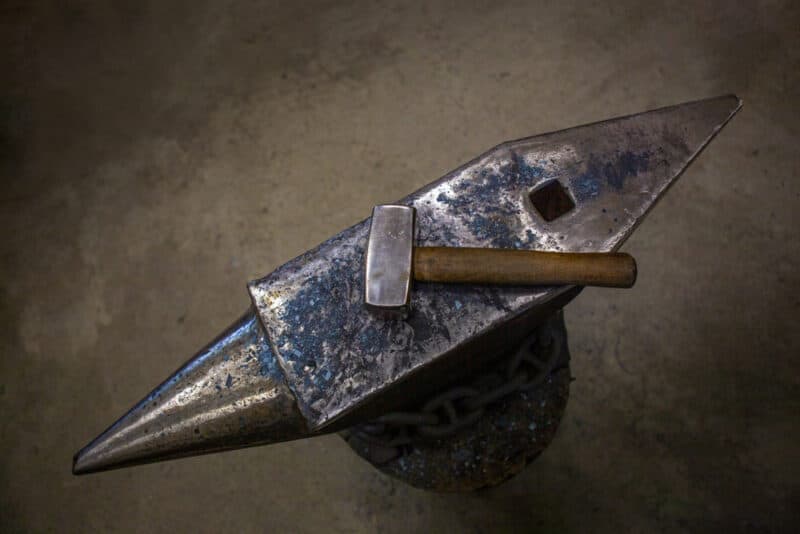
Now that you have a hammer, you need a surface to bang that iron until it takes your desired shape. Anvils are ideal because they can withstand significant striking without collapsing.
That said, any solid iron surface will do in a pinch if you’re not ready to spend much money on your blacksmithing tools at first.
Travelers used railroad ties to shape items because they were made of solid iron. They’d set up a forge next to a train track and hammer away. You should be able to find old anvils for sale on Kijiji, social media marketplaces, or even at antique shops. They usually cost about a dollar per pound. Similarly, you may find old railroad ties for pennies as well.
Ultimately, you need a flat, hard surface that can withstand being walloped by metal several thousands of times.
4. Blacksmithing Tongs
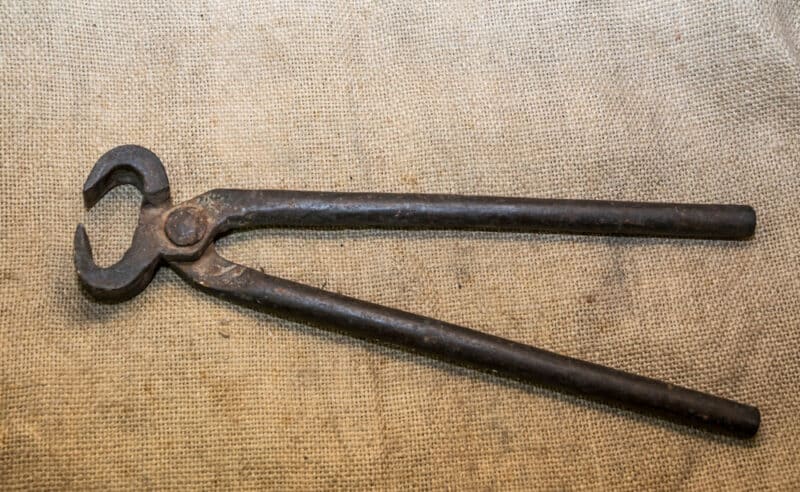
Think of tongs as extensions of your arms used for placing items in the forge to heat up, or holding them in position as you work on them. They add a bit of extra distance between yourself and the red- or white-hot metal you’re bashing, while also keeping said metal from skidding away as you work.
There are a dozen different types of tongs out there, so you’ll need to determine the type(s) you’ll use the most. For example, some are better for holding flat metal bars to shape into brackets or crowbars. Alternatively, some are better suited to holding rods or square bars for bed frames, fencing, etc.
Decide what you’ll be making the most, and then choose tongs that are best suited to making those items.
5. Quench Bucket
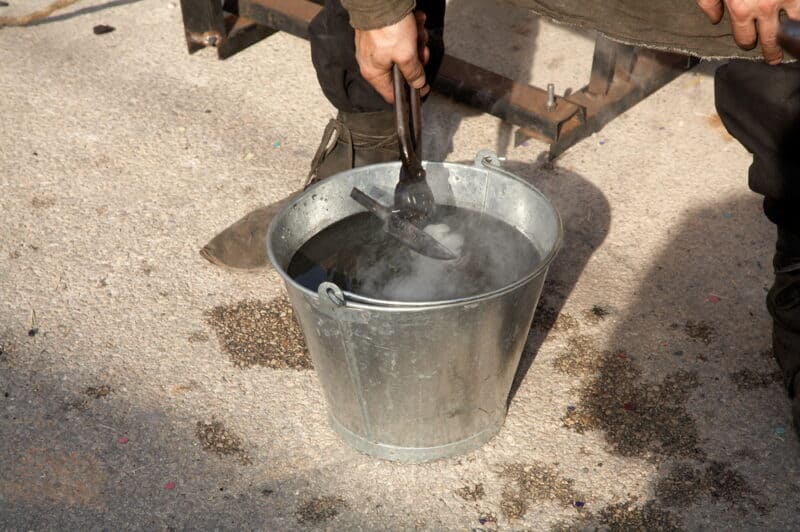
Have you ever seen a film in which a blacksmith pokes a red-hot piece of metal into a pail of water? Said pail is known as a “quench bucket.” It’s used to quickly lower the temperature of hot metal to adjust its atomic structure.
You can quench metal into water, oil, or various other types of liquid, depending on the effect you’re aiming for. For example, some quench materials will strengthen and harden the metal drenched in them. Remember that metals are crystals and will shift into different alignments depending on factors like heat and resonance.
6. Safety Gear
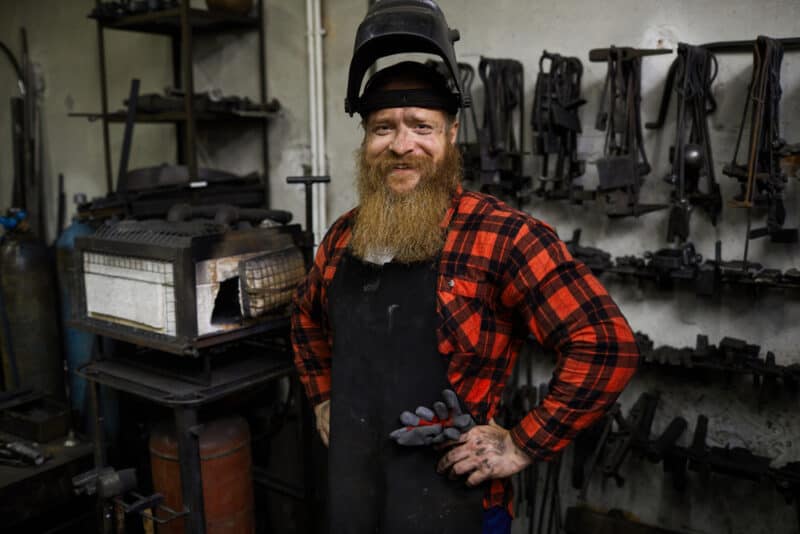
Have you ever been singed by a cinder from a bonfire or even a cigarette? Then you know how much it hurts to have one of those hit your skin.
The types of safety gear to use while blacksmithing will depend on your personal preferences, of course. Ultimately, you’ll want to ensure that your eyes are protected, so you don’t get flaming bits of metal in them. Additionally, wearing thick clothes while you work will keep your skin from getting singed.
Some of the safety gear items you may wish to invest in can include:
- Safety glasses or a full face mask
- Ear protection: the ringing from hammering iron over and over again can cause auditory damage, so consider earplugs or sound-dampening earmuffs
- A blacksmith’s apron
- A respirator: you don’t need one if you have an open-air forge, but if you’re working indoors, this is vital
- Work boots
- Leather work gloves
- Thick cotton clothing
- Fire extinguisher: a random spark can leap off and ignite nearby items, so keep an extinguisher within easy reach
Additional Blacksmithing Tools to Consider
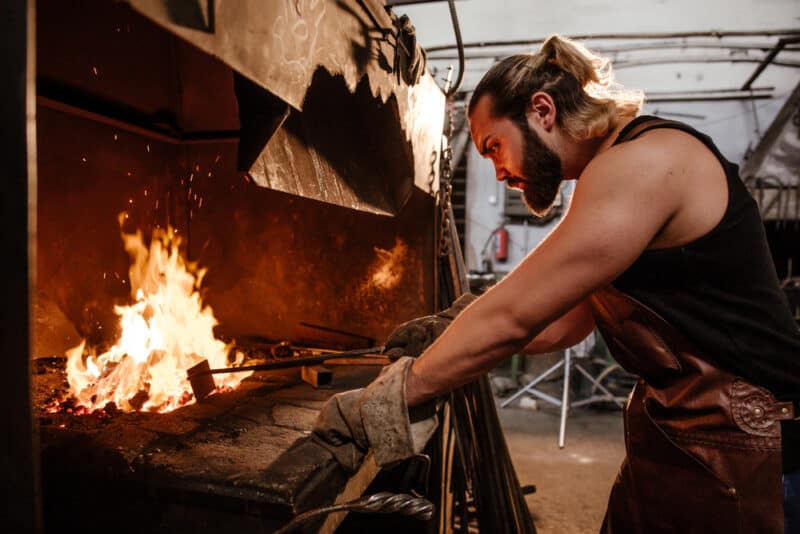
If you’re taking up blacksmithing, after finding the right blacksmithing tools, you’ll either become your neighbors’ best friend or the bane of their existence. This is because hammering metal makes a lot of noise.
This won’t be a problem if you live in a rural environment, but if you’re semi-rural, those who live nearby might end up seriously unhappy.
You may want to build a forging workshop with sound insulation in a case like this. This can be as simple as a garage lined with egg cartons or an outbuilding you’ve kitted out with thick sound-dampening mats on the walls.
In folklore, the ring of a blacksmith’s anvil was said to be powerful enough to drive evil spirits and malicious fairies away. That’s one of the reasons why the fae folk are said to have such a hatred of iron! That’s something to keep in mind in case any of your neighbors freak out at your new hobby.
The good news is that blacksmiths have always been rumored to have magical powers, since they work successfully with the elements of fire and metal. If your blacksmithing endeavors end up fruitful, you may end up making more friends (and clients) than you ever expected.
Good luck!
